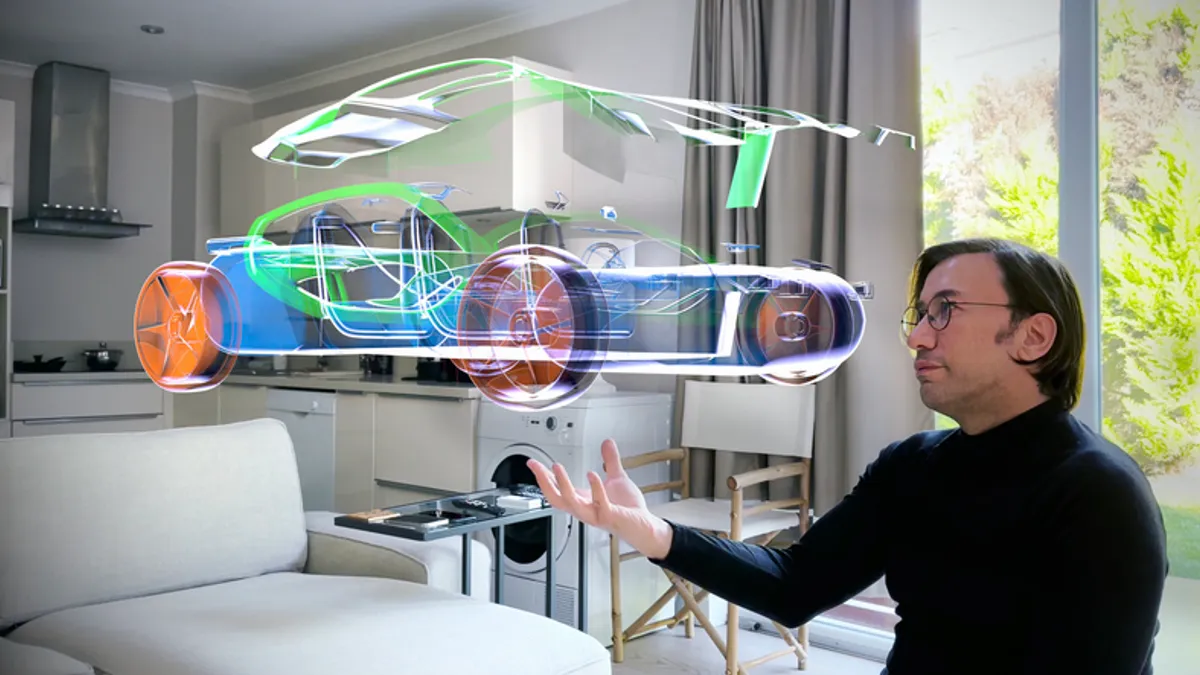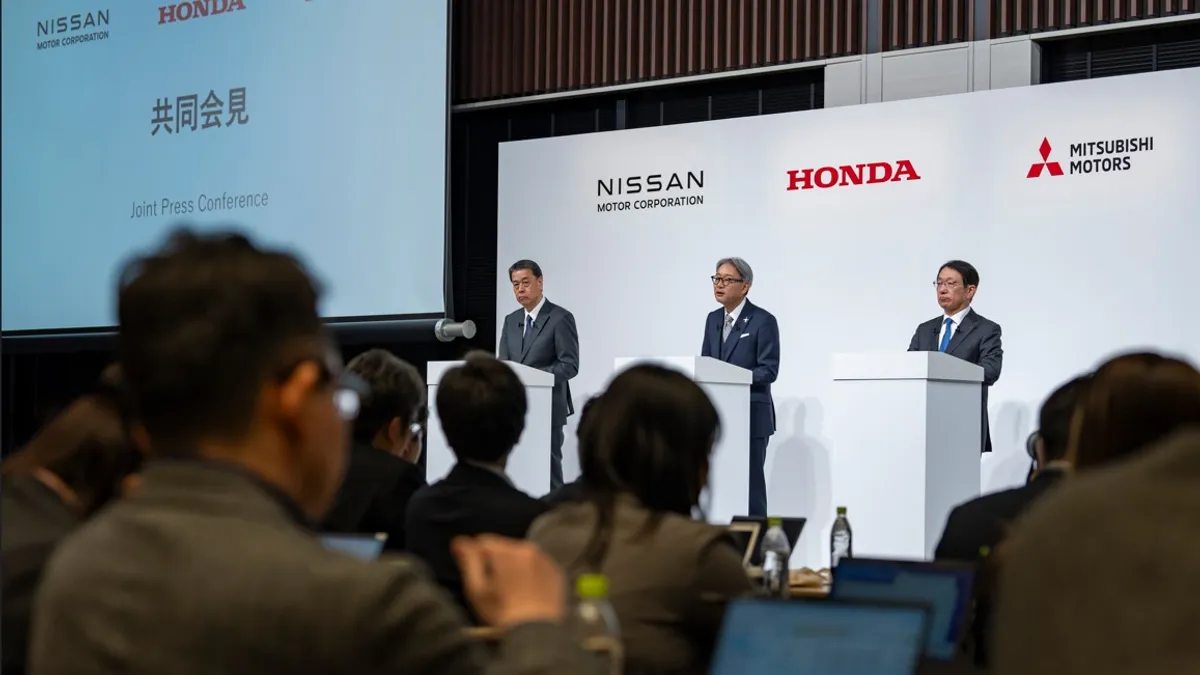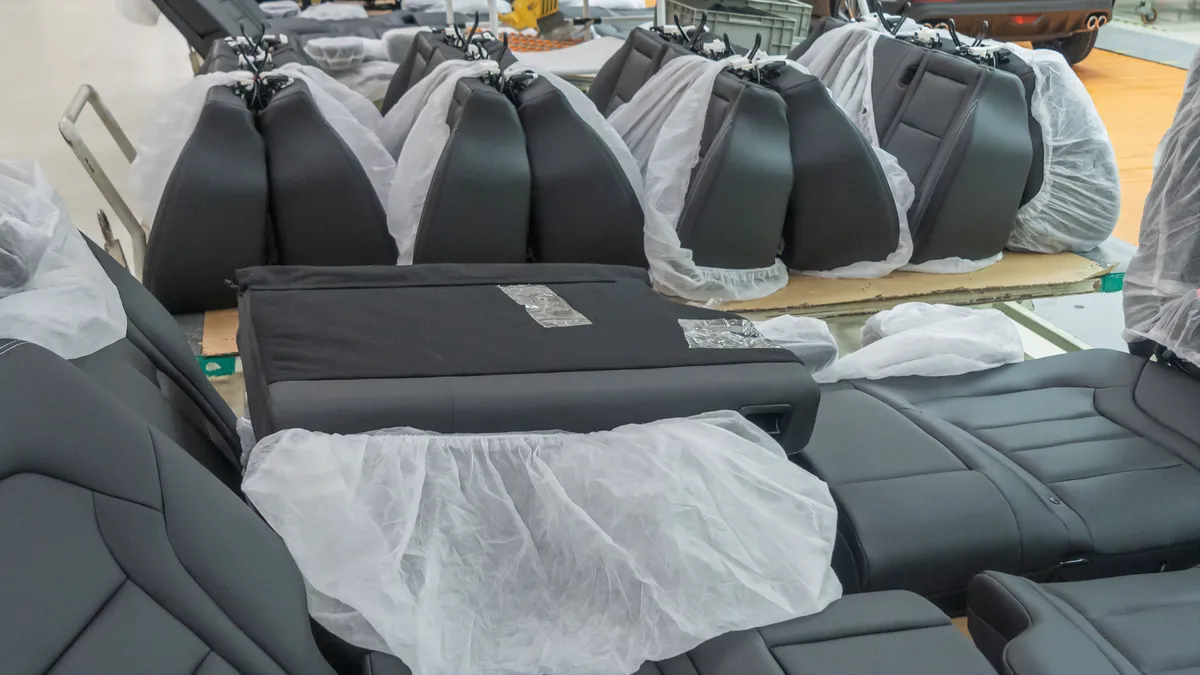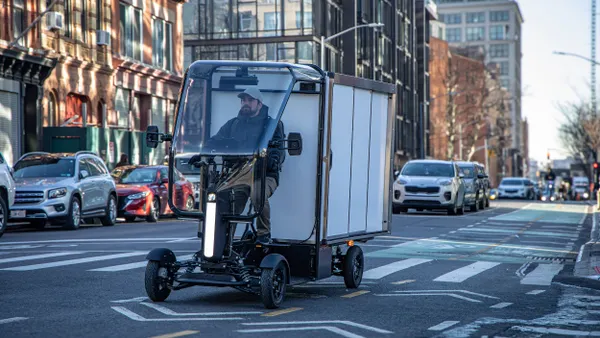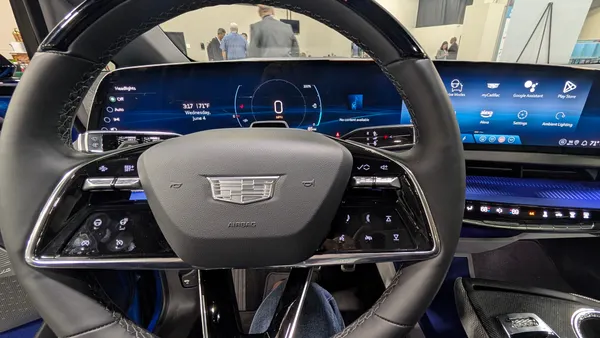AI is beginning to transform the automotive design process by allowing designers to rapidly ideate, sketch and render new designs, experts say.
Until recently, designers had to spend several weeks or months sketching before refining and rendering those images in 3D.
The experience can be frustrating for designers because of the immense manual labor required to produce dozens or hundreds of drawings that differ “in the tiniest ways,” said Alan Macey, an automotive design and brand consultant and faculty member at the ArtCenter College of Design.
However, Vizcom, a cloud-based design tools platform, now uses AI to quickly generate images based on user prompts. This enables designers to move from sketching to refining within days or even hours in some instances, according to Raphael Zammit, associate professor and chair of the master’s program in transportation design at the College for Creative Studies.
While the AI-generated images are often imperfect, those imperfections would be undetectable to “the untrained eye,” he said.
“The computer will get any untrained person 95% of the way there,” Zammit said. “You’re just going around cleaning stuff up.”
From 2D to 3D
AI-powered design tools fast-track the process of transforming 2D drawings into 3D renderings, which can be “time-consuming,” ArtCenter’s Macey said.
Typically, when designers have an idea, they must draw several 2D images in multiple views, such as a front three-quarter view, and combine them to create a 3D model.
It’s “one of the hardest things we have to teach our students,” Macey said. “It’s a very challenging thing to master.”
The latest AI image generators, however, can create 3D models “instantly” because they have been programmed extensively with massive data sets, including photos of vehicles, CCS’s Zammit said. Vizcom, for example, can create a 3D model using a single image, such as a side view, and one additional reference point, like a center line.
“All you have to do is take that model, turn it and draw on it to make some corrections,” Zammit said. “It renders as you draw on it.”
Is AI the future of automotive design?
Automakers, suppliers and design studios will increasingly rely on AI to design vehicles and components, experts say.
So, how could AI transform the automotive design process in the future?
“We have no idea,” Zammit said. “Every three months, that question has a new answer. The development is exponential.”

It’s also unclear how AI will affect demand for designers because the technology is changing quickly. According to the U.S. Bureau of Labor Statistics, job growth for industrial designers will grow 3% from 2023 to 2033.
AI-powered design tools have the potential to give a trained designer “superpowers” or eliminate the design process entirely, depending on how the technology develops and how businesses implement it, Zammit said.
“I think the answer will be somewhere in the middle,” said Jon Hull, CEO of Hydra Design Labs, an automotive design studio.
Currently, a manufacturer’s engineering, design, planning and marketing teams collaborate to realize an idea, CCS’s Zammit said.
There is also a “direct correlation” between people who are good designers and those who can get the most out of today’s AI-powered design tools, ArtCenter’s Macey said.
“You can’t hire somebody who’s not a good car designer who will be able to use these tools effectively,” Macey said.
But product planners or marketers may soon be able to enter a prompt and receive a high-quality design, reducing the need for professional designers. For instance, an automotive executive without a design background may be able to select photos of an existing product, like the Toyota Tacoma pickup truck, and ask for a version “with more of a Jaguar feel” to get nearly finished new truck design, CCS’s Zammit said.
But while AI-powered design tools are good at copying or modifying existing designs, they’re trained on images and data about what’s already been done, Zammit said. He said one unnamed company began using AI for sketching but were “getting the same old stuff” and “went back to drawing it themselves.”
Instead, they began using AI to create inspirational images rather than manually search Pinterest and other sources for inspiration, Zammit said.
Exploring uncharted territory
Experimentation is the key to successfully using AI-powered design tools, experts said.
“Don’t be afraid to experiment and try new things. It can be easy to get stuck in a certain direction with AI, whether it’s a prompt-based image generator like Midjourney or a rendering tool like Vizcom,” Hydra’s Hull said. “When you can find an experienced design team that is also adept at prompt generation and is good at creative thinking to really push tools outside of the normal use case, that is where you will find unique design elements emerge.”
“You can’t hire somebody who’s not a good car designer who will be able to use these tools effectively.”

Alan Macey
Director, automotive design and brand consultant and faculty member at the ArtCenter College of Design
Over time, the public will also improve at evaluating “what is and isn’t good design,” Hull said.
“Before AI, photorealistic images of cars were pretty sparse, but with AI we are and will continue to be over inundated with endless amounts of realistic-looking car images. Once the audience gets past the initial wow factor, they will start analyzing and comparing which of the images they’re seeing are actually successful designs,” Hull said.
So, will automotive design become bland if manufacturers get rid of designers?
“Yes,” CCS’s Zammit said. “But if the designer stays in the equation, we will get the most expressive, radical, crazy designs that we've ever seen before.”
New capabilities, such as fully 3D polygonal model generation, will soon become part of the design process, but it probably won’t eliminate the need for designers, Hydra’s Hull said.
“Don’t be worried that AI is stealing your job,” Hull said. “Learn it, stay on the leading edge and become a better designer with new tools at your disposal.”



